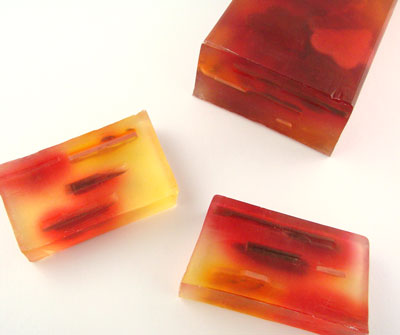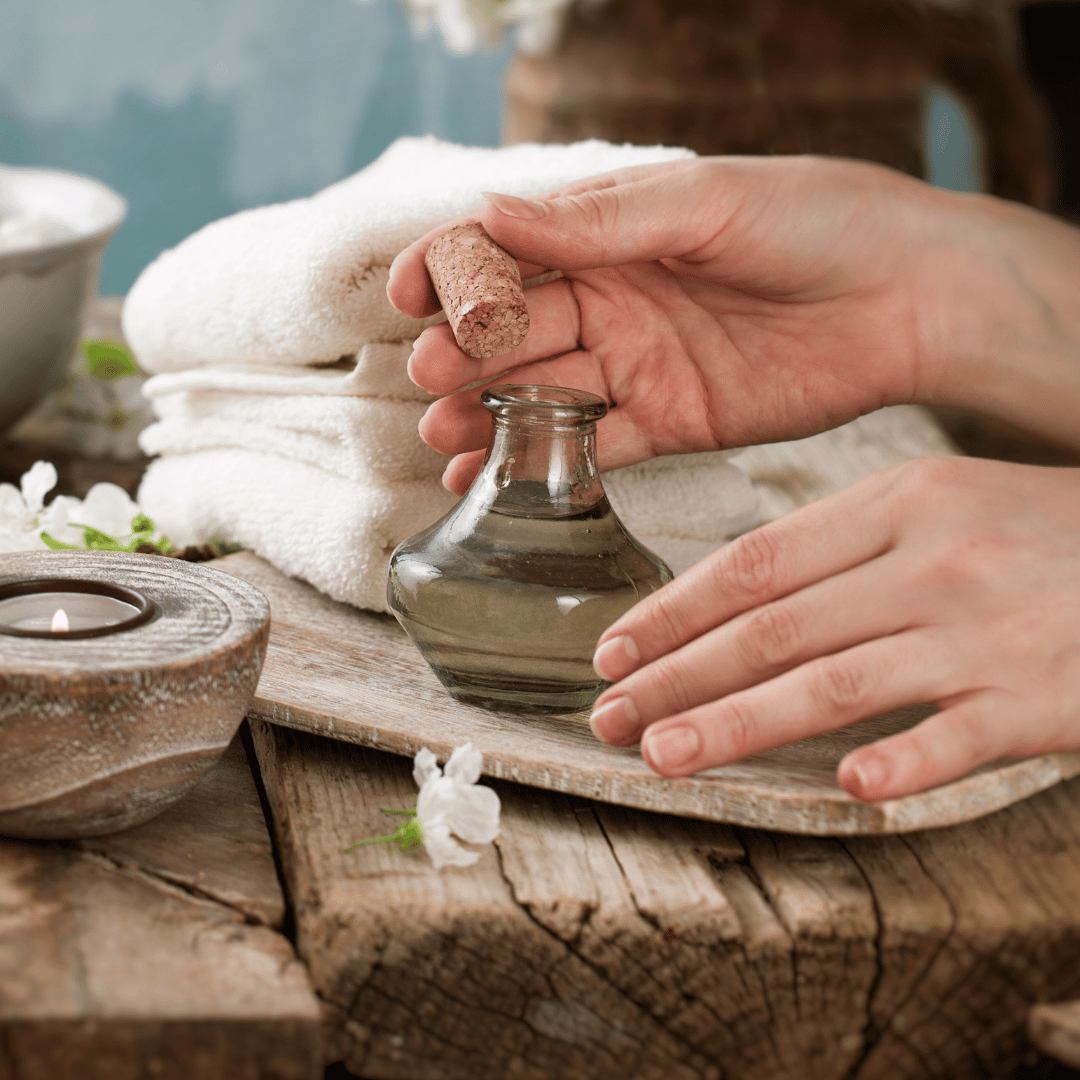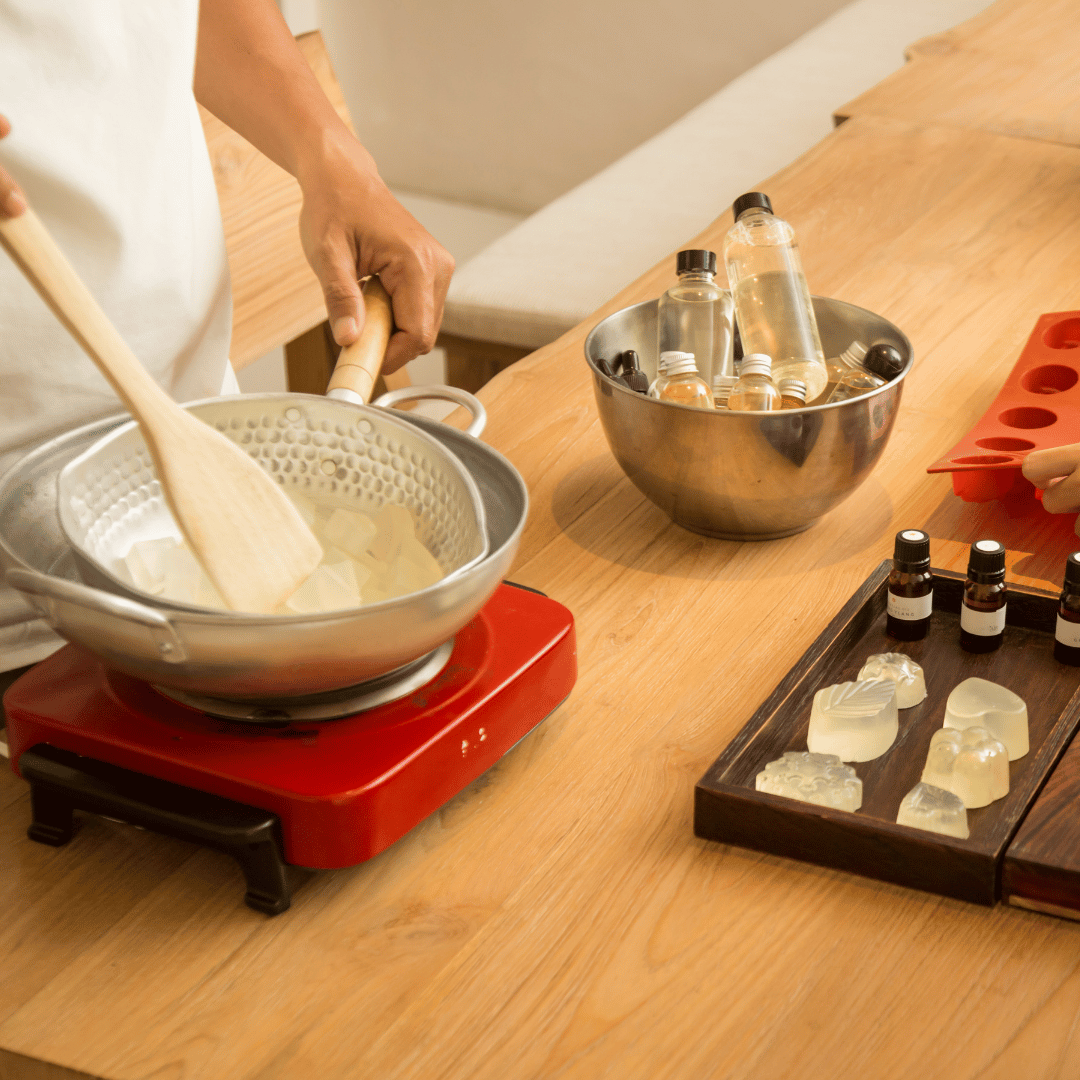The word "Bleeding" or "Migrating" refers to a color which tends to migrate over from one place to another. It is a common problem in Soapmaking, Bath Salt Making, and in making Lip products.

In the above photo of Melt and Pour Soap, you can see the red color becoming cloudy and fuzzy at the edges as the color "bleeds" into the surround yellow colored soap. Also, in the lower right corner, you can see the red has "bled" into the yellow, causing it to have a light red stain.
In a Bath Salt project, you can imagine if you layer colors one on top of each other in a decorative way, sometimes the rainbow of colors can bleed into each other. This can be attractive as for example when a layer of blue is on top of a layer of yellow and the two colors bleed together in the middle for a pretty green.
In color cosmetics, "Bleeding" tends to be an issue primarily in lip products. This is because lip products typically have a lot of dyes in them as dyes are vibrant and staining (which makes them attractive and longer-lasting on the lips). Lip products can "bleed" or feather out to the edges of the lips if they have too many bleeding colors in them.
Colors which are "bleeding" are "Dyes" (Blue #1, Red #30, etc.). As a general rule, pigments and micas are non-bleeding colors.


